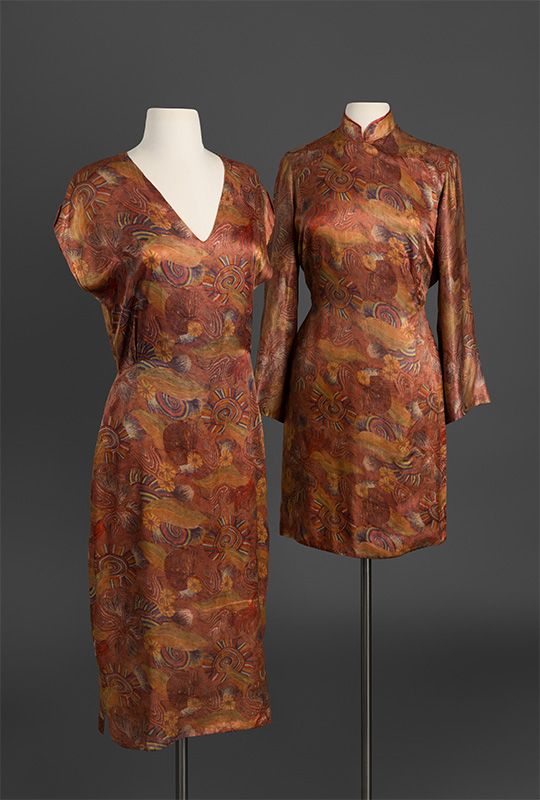To navigate social situations, artists Louise Nevelson and Esphyr Slobodkina used style.
Their manner of dress often disarmed their peers, no matter the social, economic, or creative distance between them. Clothing was also one of their many areas of design and assemblage—there is almost no daylight between Nevelson’s layering of garments that she collected and her found-object sculpture or the formal language of Slobodkina’s paintings and an abstractly designed purse. For Slobodkina, dressmaking and textile factory work were also means to survive during the hardest economic times.
Fashion, therefore, is a useful throughline when following these women’s early decades in New York as they joined artist groups, built relationships, held day jobs, and circulated socially.
Even as Nevelson would create her own style of assemblage dressing from found garments, she had never believed an artist was required to look poor to be taken seriously, a perspective she shared with Slobodkina.
For Slobodkina, she saw her outward presentation as an asset that might stand in for perceived deficits. A photograph from 1934 shows a smiling Slobodkina, but also a noticeably thinner one. Her worry and lack of confidence feel light-years away from the voice that emerges from the stacks of biting correspondence she kept for decades or from her multivolume self-published memoir. However, like Nevelson, she passed through this early period of insecurity before breaking through to becoming a confident, independent artist.
My name is Catherine Walworth, and that was an excerpt from my essay, Creative Self-Fashioning. To read the full essay, purchase a copy of Architects of Being: The Creative Lives of Louise Nevelson and Esphyr Slobodkina.

